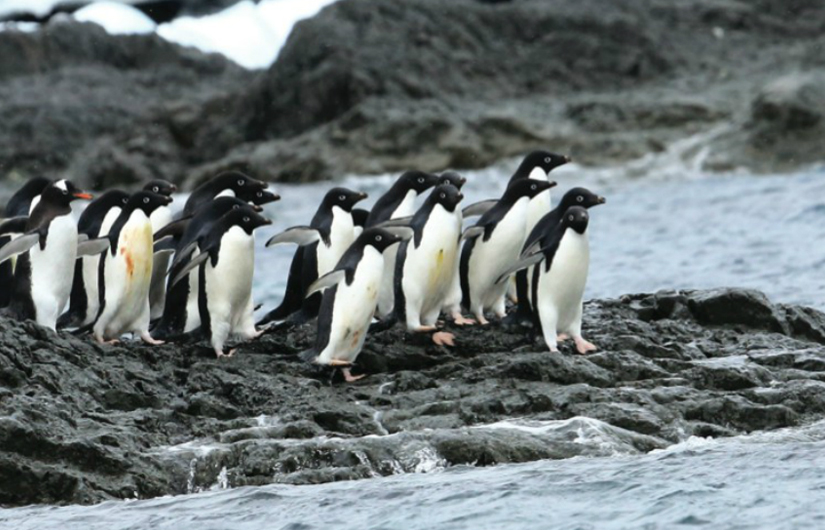ADVENTURE IN THE WHITE CONTINENT
In December last year I embarked on a trip to Antarctica, known as the White Continent, with my TV crew to film a documentary for a Thai TV channel. It was my first visit the reand the longest trip of my life. The adventure began with a 12-hour flight from Bangkok to Frankfurt, Germany, followed by a four-hour wait there and another 13-hourflight to Buenos Aires, the capital of Argentina. After an overnight stay there, I flew the next morning for three hours on a domestic flight to the town of Ushuaia, the southernmost town in Argentina and on earth, which is aptly named “The End of the World”.
I spent a night in Ushuaia, a beautiful small harbour town surrounded by snow-capped mountains. The next day, the fourth since I had left Bangkok, my team and I boarded an explorer-passenger ship named the Ushuaia, the same name as the town. The steel vessel was built for an American agency for the exploration of Antarctica and was later sold to aprivate company, which turned herin to a small cruise ship for touring the White Continent. She is 84.73 metres long, 15.54 metres wide and holds 84passengers and a crew of 38. She was to be our home for 11 days and 10nights.
The adventure continued as the ship left Ushuaia, cruising along the calm Beagle Channel until she reached Drake Passage, which the Ushuaia would take two days to cross on its way to the Antarctic Peninsula. The ships wayed up and down, left and right, asshe cruised away from the protection of the mainland and crossed the strongcurrents of Drake Passage, for cingseveral passengers to use the seasickness bags attached to the railings in the ship’s corridors.
During the two-day crossing, a few of us passengers who were photographers took up positions at the rear of the ship taking photographs of the coveys of seabirds that followed the ship in search of food brought to the surface by the spinning of the ship’s propellers. It was a real challenge and a lot of fun steadying ourselves as the ship rolled through the waves and we aimed cameras with long and heavy zoom lenses at the flying birds.
The ship ceased rolling as we approached the Antarctic Peninsula. The passengers came outside to the open decks and stared at the spectacular surrounding scenery of snow-covered mountains an dicebergs of all sizes scattered around the ship. We finally arrived at the windiest, driest and coldest place one arth, where winter temperature scan drop to minus 50 degrees Celsiusand there is no permanent human settlement. Our visit was during the summer months in Antarctica between November and April, with the coldest temperature a bearable minus 10degrees.
For the next seven days we made two landings a day on the ship’s Zodiac boats to some islands and bays to visit penguin communities and seal habitats. We saw three species of penguins – Adelie, gentoo and chinstrap – and closely observed their ways of life, especially their incubating activities. The Adelie penguin, the smallest in size, stood at 70-75 cm tall and weighed 3-6 kg, while the gen too penguin, the largestspecies we saw, had a body length of 80 cm and a weight of 6-7 kg. The chinstrap penguin, with its pleasantand funny look of a long black linecrossing its chin resembling the chinstrap of a hat, was in between witha height of 72-78 cm and a weight of3.9-5.4 kg.
The only mammals I found in Antarctica were two species of seal – the Weddell seal and elephantseal – which lived in harmony with the penguins and other avian residents of the White Continent.
On the return trip to Ushuaia, the ship again spent two days crossing Drake Passage, but this time the crossing was smooth, allowing the keen photographers to spend more time at the rear of the ship photographing the seabirds that followed. Finally wearrived back at Ushuaia, ending our memorable adventure to Antarctica, the White Continent.














































































































































































































































































































































































































































































































































































































































































































































































































